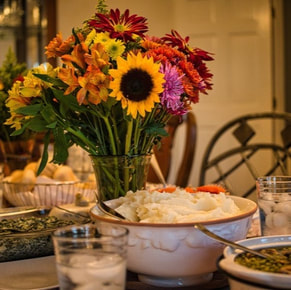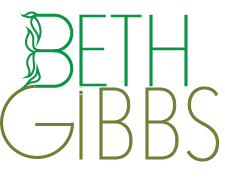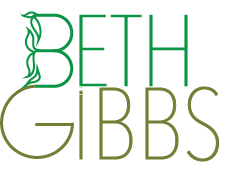ENLIGHTEN UP! a blogSelf-awareness stories: lighting our way to clarity, contentment and resilience in a complicated world.
|
 What we eat takes up a huge amount of space in our social lives and commentary. There are magazines, recipe books, television channels and self-help groups dedicated to helping folks manage the intake, quantity and quality of the food we eat. What eats us is just as important. How often have you heard the phrase, “What’s eating you?” When we eat, we consume. When something eats us, it consumes our thoughts, time, and energy. And usually that something is a difficult or troubling issue. The phrase is commonly used to ask someone why they look unhappy as in:
What you eat may be easier to work with; it’s physical. You can connect with what you eat with your five senses:
If you need to track what you eat, keep a food journal for a few weeks and you will have a clear and concrete picture of every food item you consume. What eats you, may be a bit harder to determine unless you have developed a keen sense of self-awareness. Generally, what eats us comes from relationships, work, finances, health, the environment and a variety of other soul sucking sources that includes the temptations and issues we will face during the upcoming holiday season. Although we may have similar experiences on the path to a healthy relationship with what we eat and what eats us, there are always individual rest stops, breakdowns and detours. Here are a few to consider. “Everybody is somebody’s lunch.” I don’t know where I read or heard that, but my understanding about life and my relationship with what I eat and what eats me is centered in that line. Years ago, I met the gardener at the New Age Health Spa in Neversink, New York. I was there for a weekend spa vacation. At meals, it was common for staff and visitors to eat together in the dining room. One day during lunch, the gardener told us he was quitting. We all wanted to know why. In so many words, he said that he loved his job, digging into the earth, feeling the dirt in his hands, working with the plants and vegetables and watching them grow. Then he sighed and told us that he was tired of hearing the lettuce scream when he picked it. It sounded strange then, but the scientists studying plant communication, had discovered that plants do talk. They make ultrasonic sounds to communicate stress. So the gardener’s experience may not have been as wacky as it first sounded. Anyway, there we were eating the lettuce in our salads and listening to him tell us what was eating him. We eat living things and when we die, living things eat us. As a kid, my friends and I sang this weird little rhyme with relish to refer to what eats us after we die. The worms go in and the worms go out The worms play pinochle on your snout Your tummy turns an icky green And looks and tastes just like whipped cream Imagine my surprise when I discovered this same concept in the Taittirya Upanishad, an East Indian wisdom tradition from 3,000 years ago! From food are made all bodies, which become Food again for others after their death. Now, I don’t spend a lot of time thinking about how I’ll be somebody’s lunch after I die but I do think about how I might be part of what feeds someone else’s angst during life on planet earth. Things like, how my actions and reactions might create discomfort or add to the normal dysfunction found in most families and relationships. This idea was the inspiration for a short story I wrote, titled ‘Guess Who’s Coming to Dinner.’ It was about Thanksgiving dinner with my family and how I was dreading the inevitable conflict with my brother, criticism from my mother and feeling like The Victim. Clearly it was one thing eating me. Once I looked at how my actions played a part in the family drama, I was able to approach Thanksgiving dinner with a different attitude that led to more enjoyment in what I ate and less emotional reaction to what was eating me. So, what to do? What we eat does have a relationship with what eats us. Our food choices are important. We are encouraged to eat healthy, unprocessed food when possible to improve our diets, our digestion and our overall health and well-being. As for what eats us; we can adopt a regular exercise schedule to reduce unhelpful stress. And we can develop self-awareness of our body, breath and mind to recognize our life triggers and find productive ways to manage them. This will be different for each of us and it has to be, because every one of our choices should be based on our personal needs and goals. It takes attention, clarity and self-awareness, to know what that’s going to be, to do what works, to stick to it for as long as it works and to be flexible about changing it when it no longer works. Self-Awareness Practice: Rest and Digest Unlocking the wisdom of rest and digest means paying attention to how you process what you eat and what eats you. As you practice this you’ll gain and deepen self-awareness, and move rest and digest from words on a page to skillful action in your life. You can start with this simple affirmation. “I take in and take on only that which I can digest.” This means making careful choices about what you eat and finding productive ways to respond to life and what eats you. Affirmations can set a positive intention for paying attention to a healthy physical, mental/emotional lifestyle. Affirmations are one of many tools you can use to work with what you eat and what eats you. This affirmation can be repeated silently or out loud. Or you can write it down on sticky notes and post them on your fridge, bathroom mirror, desk and dresser as a reminder of the intention you are working with. Here's wishing you success with your ‘rest and digest’ practice along with season’s greetings for whatever holidays you choose to celebrate over the next several months.
0 Comments
Your comment will be posted after it is approved.
Leave a Reply. |
Archives
July 2024
AuthorBETH GIBBS started her yoga practice in 1968, four months after her son was born and she’s been practicing ever since. She currently teaches all levels therapeutic yoga classes for adults, and specialty classes for seniors in the Hartford, Connecticut area. Beth is a certified yoga therapist through the International Association of Yoga Therapists and is guest faculty at the Kripalu School of Integrative Yoga Therapy. She writes for the blogs, Yoga for Healthy Aging, and Accessible Yoga. Her master’s degree from Lesley University in Cambridge, MA is in Yoga Therapy and Mind/Body Health. Categories |
|
|
Enlighten Up! a Blog
|
Copyright © 2023 Beth Gibbs

 RSS Feed
RSS Feed
